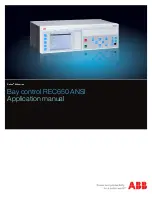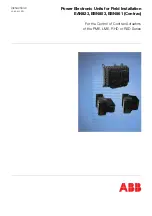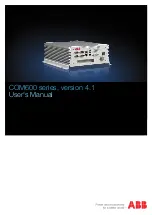
19-10
User Guide for Cisco Security MARS Local Controller
78-17020-01
Chapter 19 Incident Investigation and Mitigation
Mitigation
To Activate False Positive Drop Rules
After you have completed tuning false positives, click
Activate
to immediately implement the changes.
Mitigation
Mitigation refers to the action of limiting an attacking network element’s access to the network by
modifying the configuration of an enforcement device, usually a switch, router, or firewall. CS-MARS
can perform the following actions related to mitigation:
•
Identify attacking and compromised hosts
•
Plot Layer 2 and Layer 3 topology of the affected network segment to identify mitigation points and
enforcement devices
•
Recommend configuration commands for Layer 2 and Layer 3 enforcement devices
•
Push (that is, download) recommended configuration commands to supported Layer 2 devices
With Telnet, SSH, or SNMP access to switches and routers, CS-MARS can recommend and push
mitigation configurations to enforcement devices, as well as generate interactive topology and incident
path diagrams. Without Telnet, SSH, or SNMP access, some mitigation information can still be obtained
from Cisco switches running specific IEEE 802.1X Port Based Network Access Control protocol
configurations, but recommended mitigation commands must be configured manually on the
enforcement devices. See
Layer 2 Path and Mitigation Configuration Example, page 19-17
for further
information and procedures for configuring Layer 2 devices to receive CS-MARS mitigation commands.
Static and Dynamic Network Information
Topology information obtained from access to relatively permanent Layer 2 and Layer 3 devices is called
Static Information in the HTML interface. Dynamic Information refers to frequently changing
information such as host names, or DHCP-leased IP addresses obtained through devices or agents that
report dynamic events, such as 802.1X access control configurations, the Cisco Security Agent, or other
security suite software. The CS-MARS can determine a mitigation point and an enforcement device if a
Cisco 802.1X-enabled switch is running DHCP-snooping with RADIUS authentication through a Cisco
Access Control Server (ACS). When a DHCP-snooping transaction is completed, the switch sends a log
message to the ACS. The ACS logs are sent to the CS-MARS to report the Source IP address, user name,
connection start and stop times, physical interface, and MAC address of each 802.1X client. Because
802.1X clients are often mobile, remember that 802.1X mitigation actions can occur only when the
attacking host is currently connected to the network.
Note
For some 802.1X switch configurations, it is not possible for CS-MARS to determine the correct
physical interface to which to push a mitigation command. This occurs for switches, such as the Cisco
Catalyst 3550 Multilayer switch, where a FastEthernet and a Gigabit Ethernet port can have the same
module
/
port
designation (for example, 0/1). Because CS-MARS receives only the
module
/
port
information from the Cisco ACS logs, it cannot identify the specific port to mitigate. The following
message appears in these circumstances:
No mitigation possible. Enforcement device exists but interface names conflict. Determine
appropriate interface and mitigate manually.
Содержание CS-MARS-20-K9 - Security MARS 20
Страница 20: ...Contents xx User Guide for Cisco Security MARS Local Controller 78 17020 01 ...
Страница 356: ...17 16 User Guide for Cisco Security MARS Local Controller 78 17020 01 Chapter 17 Network Summary Summary Page ...
Страница 420: ...20 28 User Guide for Cisco Security MARS Local Controller 78 17020 01 Chapter 20 Queries and Reports Reports ...
Страница 580: ...Glossary GL 4 User Guide for Cisco Security MARS Local Controller 78 17020 01 ...
















































